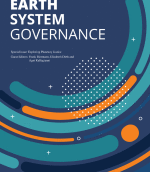This article analyzes the increasing institutional and organizational complexity and fragmentation surrounding the international financing mechanism REDD+ (reducing emissions from deforestation and forest degradation in developing countries and related forest activities), now being negotiated within the UNFCCC. We focus, in particular, on critically assessing the prospects of managing such fragmentation. We do so by analyzing whether and how (what we conceptualize here as) a “bridge organization”—the voluntary, multi-stakeholder REDD+ Partnership bringing together state and non-state actors from global to local scales—has aided in managing fragmentation in this realm, through exercising four enabling functions (enhancing transparency, participation, knowledge sharing, and coordination). Our analysis shows that the REDD+ Partnership has partially succeeded in furthering such procedural aims, but that this has not resulted in a “scaling up of REDD+ action and finance,” its overarching substantive aim. In contrast to dominant views of a bridge organization’s modus operandi, we conclude, based on our analysis, that its value lies not in overcoming persisting geopolitical conflicts around climate mitigation and providing a “depoliticized” context within which to manage fragmentation. Instead, its success lies in permitting dialogue and exchange even in the face of persisting political conflicts over its raison d’être and functions. In making these arguments, the article extends recent debates on the prospects to manage fragmentation in global environmental governance and provides a critical assessment of the role therein for bridge organizations.
Managing fragmentation in global environmental governance: the REDD+ Partnership as bridge organization
Gupta, Aarti, Till Pistorius, Marjanneke J. Vijge. 2016. Managing fragmentation in global environmental governance: the REDD+ Partnership as bridge organization. International Environmental Agreements: Politics, Law and Economics, 16 (3): 355–374.









